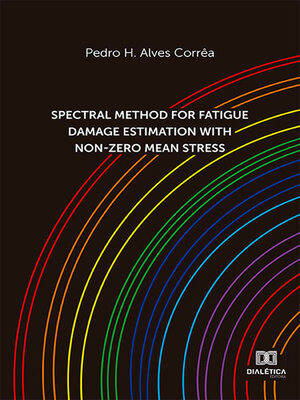Spectral method for fatigue damage estimation with non-zero mean stress
ebook
By Pedro H. Alves Corrêa

Sign up to save your library
With an OverDrive account, you can save your favorite libraries for at-a-glance information about availability. Find out more about OverDrive accounts.
Find this title in Libby, the library reading app by OverDrive.



Search for a digital library with this title
Title found at these libraries:
| Loading... |
This thesis consists of a fatigue study carried out on an aluminum alloy 2024-T3 in both time domain and frequency domain. Non-zero mean random signals of strain and stress are analyzed in time domain using usual Rainflow method and the damage is accumulated with the Palmgren-Miner rule, according to mean stress equations. The signals are analyzed in frequency domain using the power spectral density and the probability density function. The spectral domain analysis does not consider the negative effect of the mean stress in metal life under fatigue, so the correction factors for mean stresses developed by Goodman, Morrow, and Smith-Watson-Topper are used to change the power spectral density and, thus, the damage calculated by the probability density functions postulated by Dirlik and Tovo and Benasciutti. It is found that both Dirlik and Tovo and Benasciutti are non-conservative for a non-zero mean stress signal when comparing the damage to the one obtained in time domain analysis. When the spectral method is corrected, the results vary from Rainflow 4.9% for wide band and 6.8% for narrow band signals, always in the conservative zone, therefore predicting more damage. Tovo and Benasciutti 2 method is found to be the spectral function with the closest results when compared to the usual Rainflow method in time domain.






